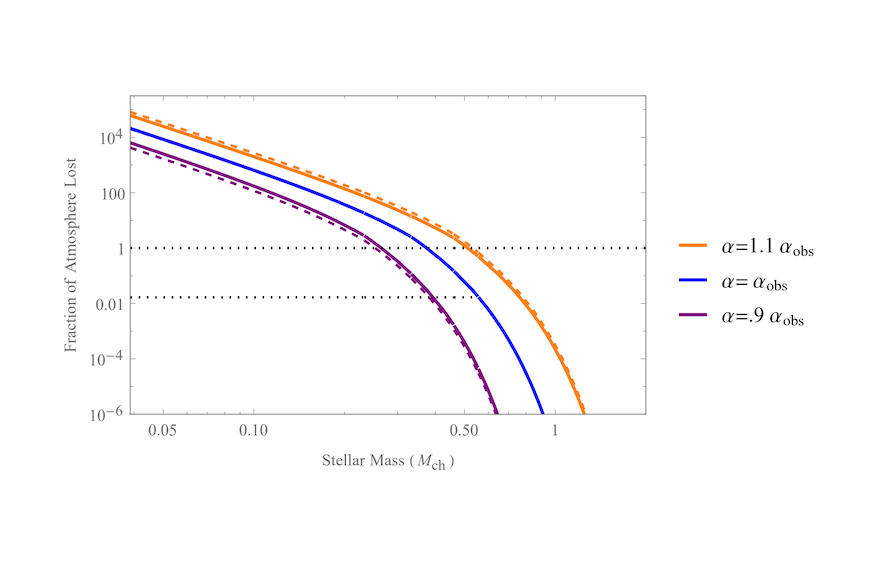Multiverse Predictions For Habitability: Stellar And Atmospheric Habitability

Stellar activity and planetary atmospheric properties have the potential to strongly influence habitability. To date, neither have been adequately studied in the multiverse context, so there has been no assessment of how these effects impact the probabilities of observing our fundamental constants.
Here, we consider the effects of solar wind, mass loss, and extreme ultra-violet (XUV) flux on planetary atmospheres, how these effects scale with fundamental constants, and how this affects the likelihood of our observations. We determine the minimum atmospheric mass that can withstand erosion, maintain liquid surface water, and buffer diurnal temperature changes. We consider two plausible sources of Earth’s atmosphere, as well as the notion that only initially slowly rotating stars are habitable, and find that all are equally compatible with the multiverse.
We consider whether planetary magnetic fields are necessary for habitability, and find five boundaries in parameter space where magnetic fields are precluded. We find that if an Earth-like carbon-to-oxygen ratio is required for life, atmospheric effects do not have much of an impact on multiverse calculations.
If significantly different carbon-to-oxygen ratios are compatible with life, magnetic fields must not be essential for life, and planet atmosphere must not scale with stellar nitrogen abundance, or else the multiverse would be ruled out to a high degree of confidence.
McCullen Sandora, Vladimir Airapetian, Luke Barnes, Geraint F. Lewis
Comments: 23 pages, 2 figures
Subjects: Earth and Planetary Astrophysics (astro-ph.EP); Atmospheric and Oceanic Physics (physics.ao-ph)
Cite as: arXiv:2303.03119 [astro-ph.EP] (or arXiv:2303.03119v1 [astro-ph.EP] for this version)
Journal reference: Universe 2023, 9, 4
Related DOI:
https://doi.org/10.3390/universe9010004
Focus to learn more
Submission history
From: McCullen Sandora
[v1] Thu, 2 Mar 2023 23:20:16 UTC (1,444 KB)
https://arxiv.org/abs/2303.03119
Astrobiology








